

Want to know how much a new bathroom costs? Whether you’re creating one in a brand-new home extension, or revamping an existing space, it’s vital to have an idea of how much you’re going to need to spend to create the room you want before you start.
You might be after a super-luxurious spa-style room, planning to add a handy ensuite, or to bring another of your favorite bathroom renovation ideas to life but, whatever you want from your design, it’s important to know about all the costs that could be part of the final bill before you start. And our guide will give you just that, providing you with the lowdown on the spend required to design or renovate your room.
How much does a bathroom renovation cost?
Jump to...
The bathroom cost will depend on what bathroom ideas you're recreating. If you are building a new bathroom in an extension or moving a bathroom to a new room, expect to pay extra to connect to services such as the waste pipe, water and electrics.
However, as a rough guide a complete bathroom remodel costs an average of £6,000, assuming you can connect to existing pipework. The majority of this will be in labour costs and do not forget that as well as plumbing and fitting, you need to account for tiling, flooring and decorating, too.
Sanitaryware costs vary widely depending. For example, a budget-friendly acrylic bath will cost as little as £80, while a mid-range bath will be £200 to £300. Expect to pay upwards of £1,000 for designer and statement baths, especially if they are made from cast iron, stone or composite materials. See more details on sanitaryware costs below.
We have a specialist guide to help you figure out your bathroom renovation cost, taking into account everything from the price of fittings and fixtures, to the amount you should expect to pay contractors. This is an important aspect of the process of designing a bathroom that shouldn't be skipped – especially if you're sticking to a strict budget.
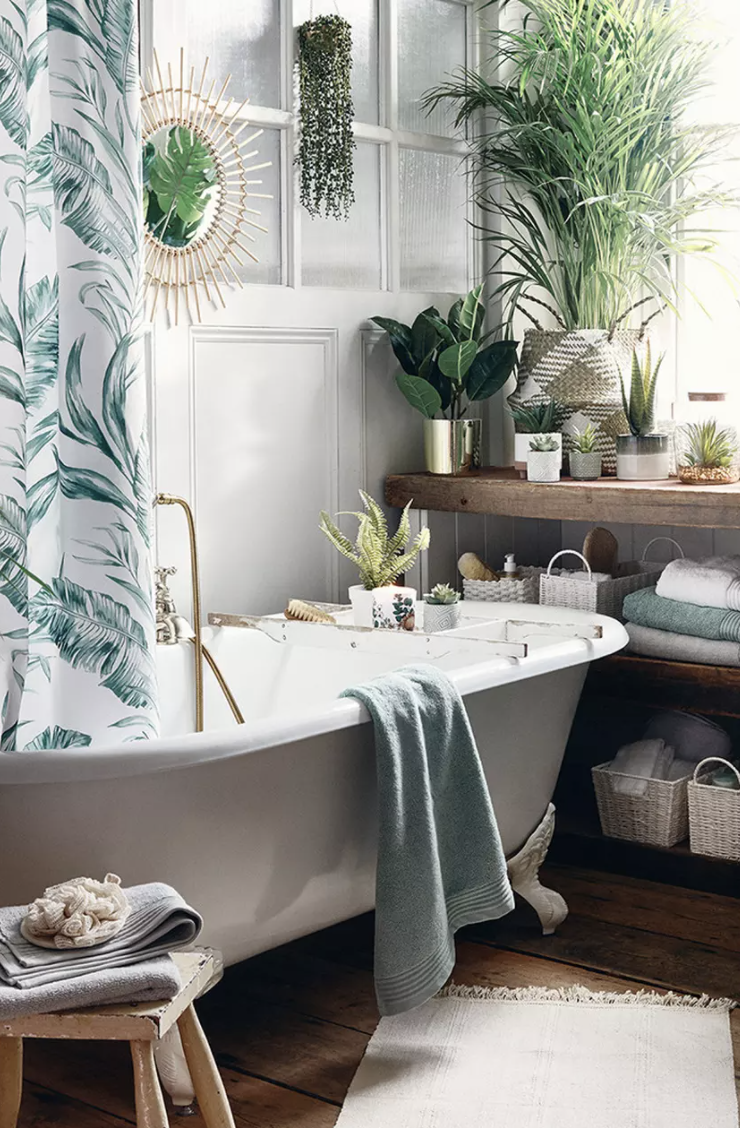
Consider your priorities
When it comes to cutting the costs of a new bathroom, the first step is to establish what's a priority, and what isn't. Take time to consider how you use your current bathroom on a daily basis, taking note of what works, and what could work better.
Get small space home decor ideas, celeb inspiration, DIY tips and more, straight to your inbox!
If you only enjoy a soak in the bath once in a blue moon, carefully consider whether you need one at all. Or, if you usually have showers but love to unwind in the bath at the weekend, could combining the two by opting for a spacious shower-bath save on the cost of a separate shower? Remember that family homes need at least one bath for bathing the little ones – something prospective buyers will consider should you sell.
You should avoid reconfiguring your bathroom layout, unless you have to. To cut the cost of a new bathroom, don’t reposition anything that doesn’t really need to be moved as it will add to plumbing costs.
Moving the toilet would involve relocating both the toilet drain/vent and waste water systems, and also supplying water to its new spot. This can prove to be very costly.
Find more tips in our guide to bathroom plumbing.

Are your bathroom renovation plans feasible for your budget?
The next step is to assess the feasibility of your plans, bearing in mind that the cost of a new bathroom will be affected by the location, as will changing an existing bathroom's layout.
Attention to detail when planning your space means you’ll get it right first time, which can save you money correcting mistakes later. Make use of free online planning tools, or work with a company that offers a free design service.
3D plans are a great way to see whether your choice of products will fit. Talk to your plumber or fitter before you buy, too, as they’ll be able to tell you if what you want is suited to your space.
‘Discuss options with your installer and bathroom designer to get an idea of costs,’ says David Smith. ‘Loft conversions for example lend themselves to large, light bathrooms that make a real design statement. To keep costs down, often the best place is directly above your existing bathroom, as this should ensure that you can connect into the existing drainage and water supplies without requiring excessive pipework.’
You might find our tips for solving common plumbing problems a useful read and for a guide to loft conversion costs, we can help too.

Optima bespoke shower in a loft en suite by Coram Showers
How much does an ensuite bathroom cost?
You might think that as an ensuite is smaller it will cost less than a normal bathroom, but this isn't always the case. Unless you are adding the ensuite in place of, or near an existing bathroom, connecting to the plumbing could be a cost-adding complication. This is often true of loft conversions where you should budget for additional plumbing work.
That said, if your ensuite is to be a shower room rather than full bathroom, you will not have the expense of the bath. So, you will either save money – or more likely use it as an excuse to splash out on higher-end fittings...
If you want to give the appearance of a larger space, without having to knock walls down, use carefully considered visual tricks to give the illusion of more space. Choosing the right size tiles is one way to do this. ‘Large-format wall tiles in neutral shades can make the room look larger and more luxurious,’ says Sian O’Neill, of Topps Tiles.
‘Using the same tiles on the walls as you do on the floor can also create a seamless look. A well-placed wall-to-wall mirror can give the illusion of more space,’ adds Michael Holmes. ‘But avoid having it somewhere where you need tap and socket holes cut out to keep costs down.’
Find more tips and tricks in our guide to how to choose the best wall tiles.
Check out our guide for more detailed advice on how to add an ensuite bathroom.
Calculate your bathroom renovation costs
‘All of your products and features need to be considered before your installation team quotes for the renovation,’ says David Smith, senior designer at Ripples. ‘Forward planning will allow for accurate pricing and a realistic project schedule of works.’
It's worth acquainting yourself with the basics of bathroom plumbing, too, so that you can make informed decisions.
Use our checklist to think about the features you would like to include.
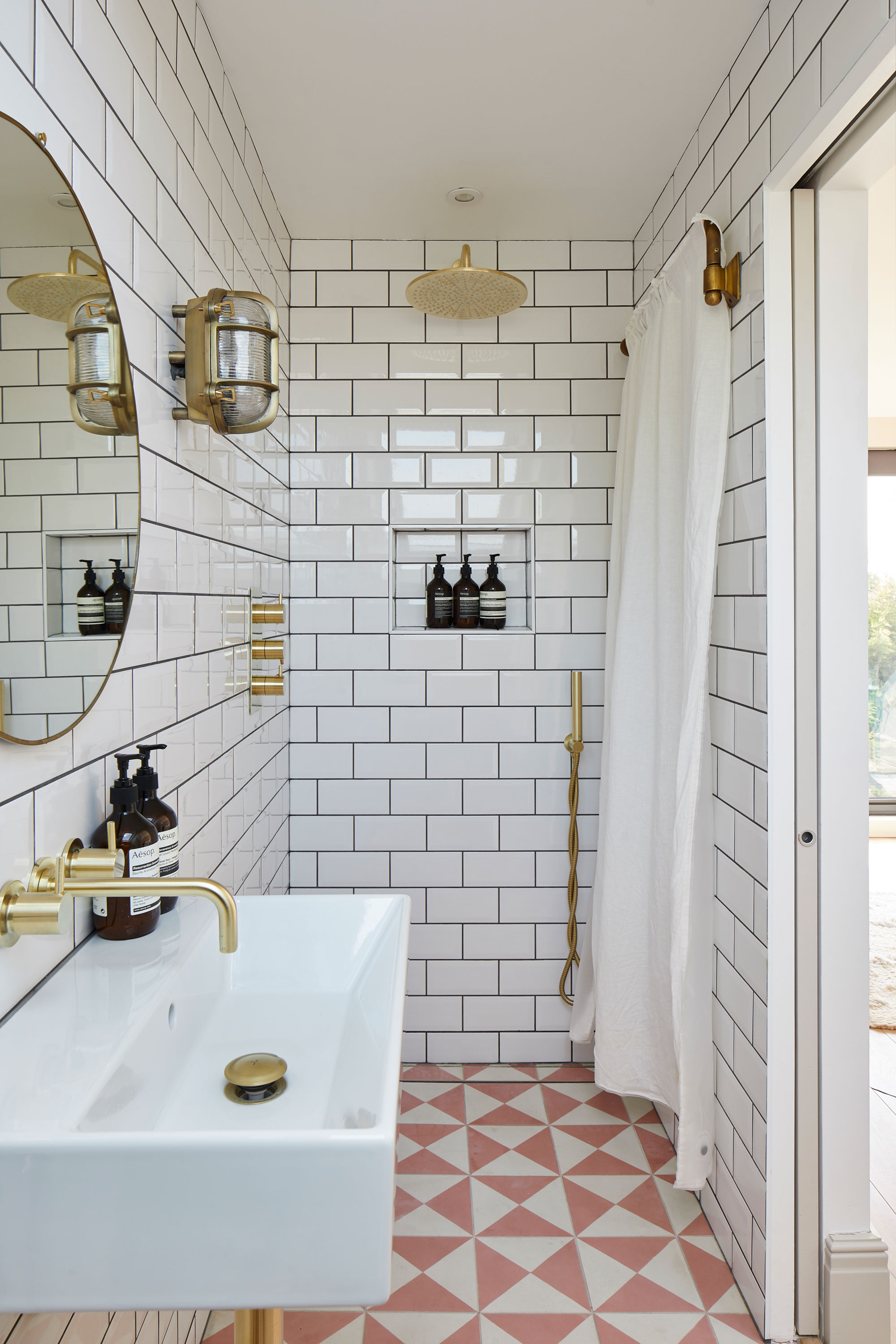
Your essential bathroom remodel checklist
Sanitaryware:
- A bathroom suite bundle (bath, basin, toilet and sometimes taps) – from £200
- Fitted bath – £80–£600 for standard quality
- Freestanding bath – from £400
- Shower bath – £160–£500
- Shower – from £50–£1,000
- Shower enclosure, door or screen – from £50 but wet room kits or frameless screens for large walk-in showers will be £200–£500
- Pedestal basin – from £50
- Console basin – from £50
- Twin basins – this depends on the setup but a double vanity with two sinks will be upwards of £300
- WC – from £75 for a basic close-coupled unit
- Bidet – from £80
- Taps – from £25 (for bath or basin)
Storage and furniture:
It is hard to estimate costs for these elements so have a look around to see what is on the market – our bathroom storage ideas is a good place to start. Some storage may be built in by your bathroom fitter, so ask for costs for bespoke elements.
Flooring and decorating:
Follow the links below to get an idea of cost breakdown for different flooring types and décor.
Lighting:
‘Bright bathroom lighting can make a room feel spacious and fresh,’ says Michael Holmes. ‘You can switch a single central ceiling pendant for a multi-lamp fitting without having to alter the wiring. But make sure fittings are IP rated so they are safe to use in wet areas.’
Check out suppliers’ clearance areas to see if they have any one-off lights that would suit your scheme for a fraction of the normal price. For more advice on bathroom lighting check out our feature.
Heating and electrics:
- Heated towel rail or radiator
- Waterproof television
- Built-in Hi-Fi
- Bathroom lighting
- Lighting controls
- Automated bath filler
- Underfloor heating – from £100/m2 for electric or £170/m2 for water systems
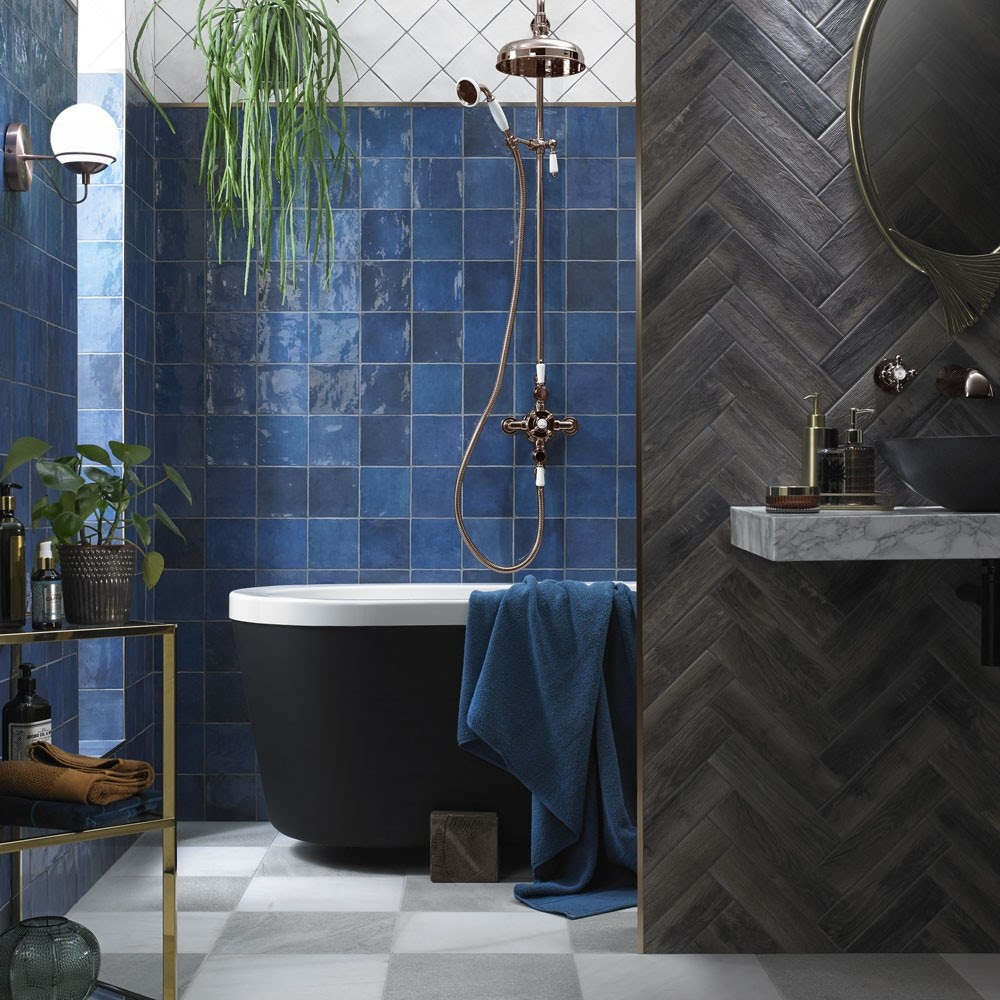
How much does it cost to use an expert bathroom designer?
A bathroom design specialist firm may work out a little more expensive than employing individual contractors, but you should find it easier to nail a fixed price with them up front – plus they will project manage the entire renovation for you.
‘A specialist company will be qualified in all aspects of the installation, including tiling, electrics and carpentry,’ says David Smith. ‘But check whether the company has experienced tilers and plasterers, or whether it contracts this work out – an inexperienced tiler or plasterer may take three times longer. Will your installer take responsibility for all the work and oversee the quality? Check for recommendations from friends; ask for quotes before signing contracts, and don’t be afraid to request references.’
You should spend time discussing the space with your designer. ‘A site visit is imperative to take the dimensions of the room, check the direction of the floorboards, the heights of ceilings, and to measure water-pressure systems, along with observing the style of the house,’ David explains.
Bathroom specialist cost
If you’re working with a specialist bathroom company, the price should include all elements. The ideal place to start any project is with a fixed budget. A good company will then design and install to that figure.
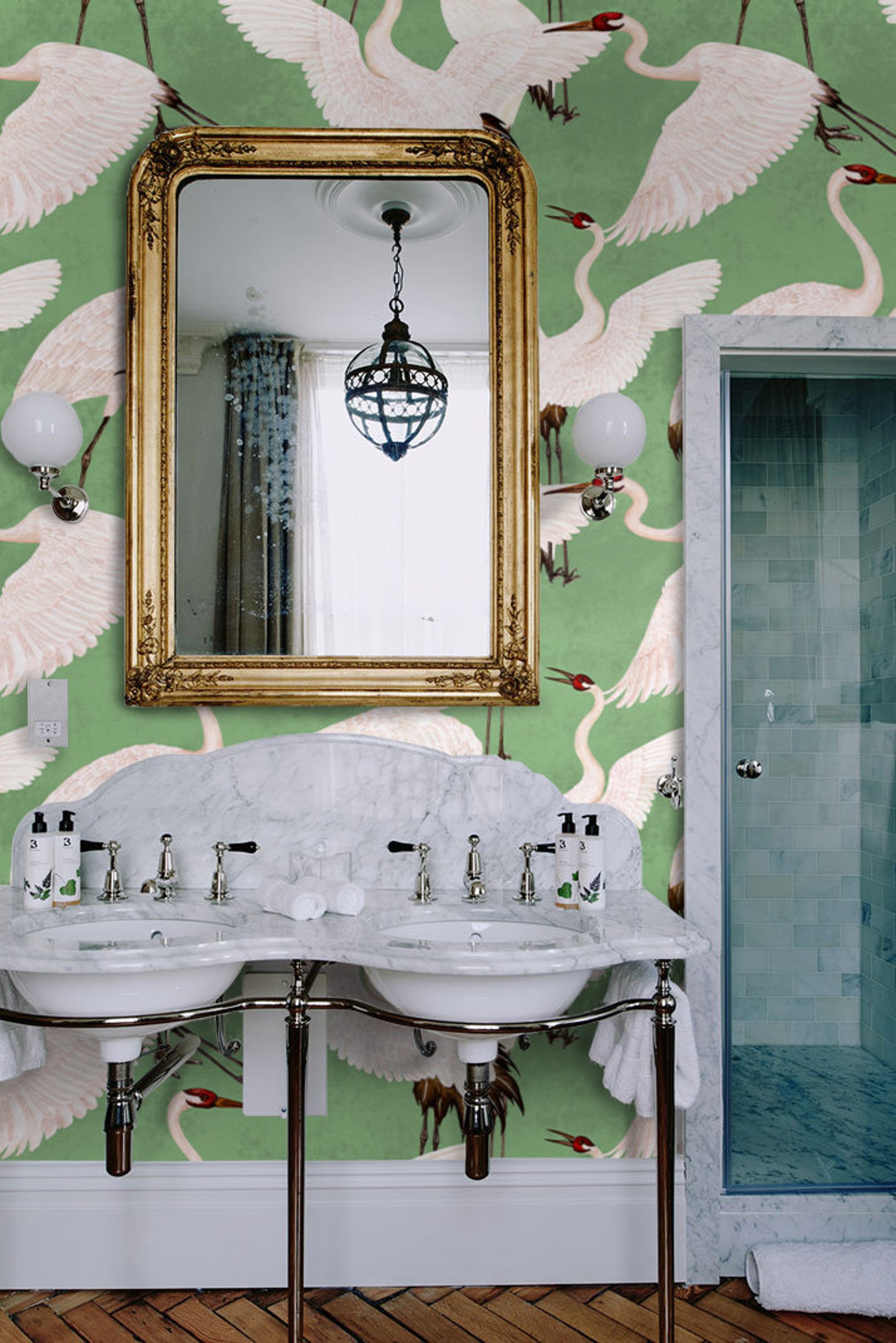
Bathroom fitting costs
If you have decided to employ individual contractors for your project, ask for personal recommendations, and make sure that anyone you use is accredited.
For builders, tilers, plasterers and electricians, look to trade organisations, such as the Federation of Master Builders, or government-licensed TrustMark.
You can also find local electricians through trade bodies, such as NICEIC. For electrical, heating and hot-water contractors, visit ELECSA, while NAPIT provides a list of electricians and plumbers.
Bathroom electrics costs
You might have to upgrade your consumer unit if you have no residual current device on your electrics. An average cost would be £400 to £500. Expect to pay an electrician around £200 to £250 as a day rate.
Bathroom plumbing costs
Try to get a fixed price from your plumber for the installation work, but ask at the same time how long the job will take. As a rough guide, a plumber will charge around £280 to £460 as a day rate.
Think ahead to reduce your water consumption in the long run
Once you're in, there are lots of specially designed taps available that can reduce water usage by half compared to regular taps, saving on your water bills. And fitting a flow restrictor to your shower will limit the amount of water you use without compromising its performance.
A shower flow regulator – we'd recommend this Chrome Water Saver from Universal – limits the fall of water per minute, reducing both your water use and – perhaps more attractively – your bills. Other water-saving gadgets include the Hippo Water Saver, which is popped into the toilet cistern to reduce the amount of water used in a flush by up to three litres.
If you like this idea, you'll find plenty more, just like it, in our guide to how to reduce home energy costs.
Bathroom carpentry costs
Expect to pay carpenters around £175 to £200 per day, although these rates – as with all others – will vary according to the specification of the job and where in the country you live.
Bathroom permission costs
It's unlikely you'll need planning permission for a new bathroom, but if it’s part of a loft conversion, check whether this needs an approved application or falls under the permitted development regime. If you live in a terraced or semi-detached house, the party wall act may apply. Look at the Planning Portal and check with your local authority.
Drainage and electrical works may be subject to building regulations, which will involve a small fee. If you are using a room where there isn’t a bathroom now, approval will probably be needed. The floor may have to be strengthened if you are fitting a bathroom suite where there wasn’t one. A structural engineer or surveyor can create the documentation needed. A surveyor (see rics.org) can arrange agreements, or find details on the Planning Portal
Planning costs
If you’re putting a bathroom in a loft conversion and cannot carry out work under permitted development rights, budget £206 for a householder planning application in England. When making use of your permitted development rights, a certificate of lawful development costs £103 (England). See the Planning Portal for other fees.
Party walls cost
If your bathroom is in a loft conversion and the Party Wall etc Act applies, plus you need to employ a surveyor, factor around £1,000 into your budget.
Building control cost
If you’re converting the loft, building control fees are likely to be around £750 to £1,200 for a standard conversion. Otherwise, budget for around £300, but check with your local authority.
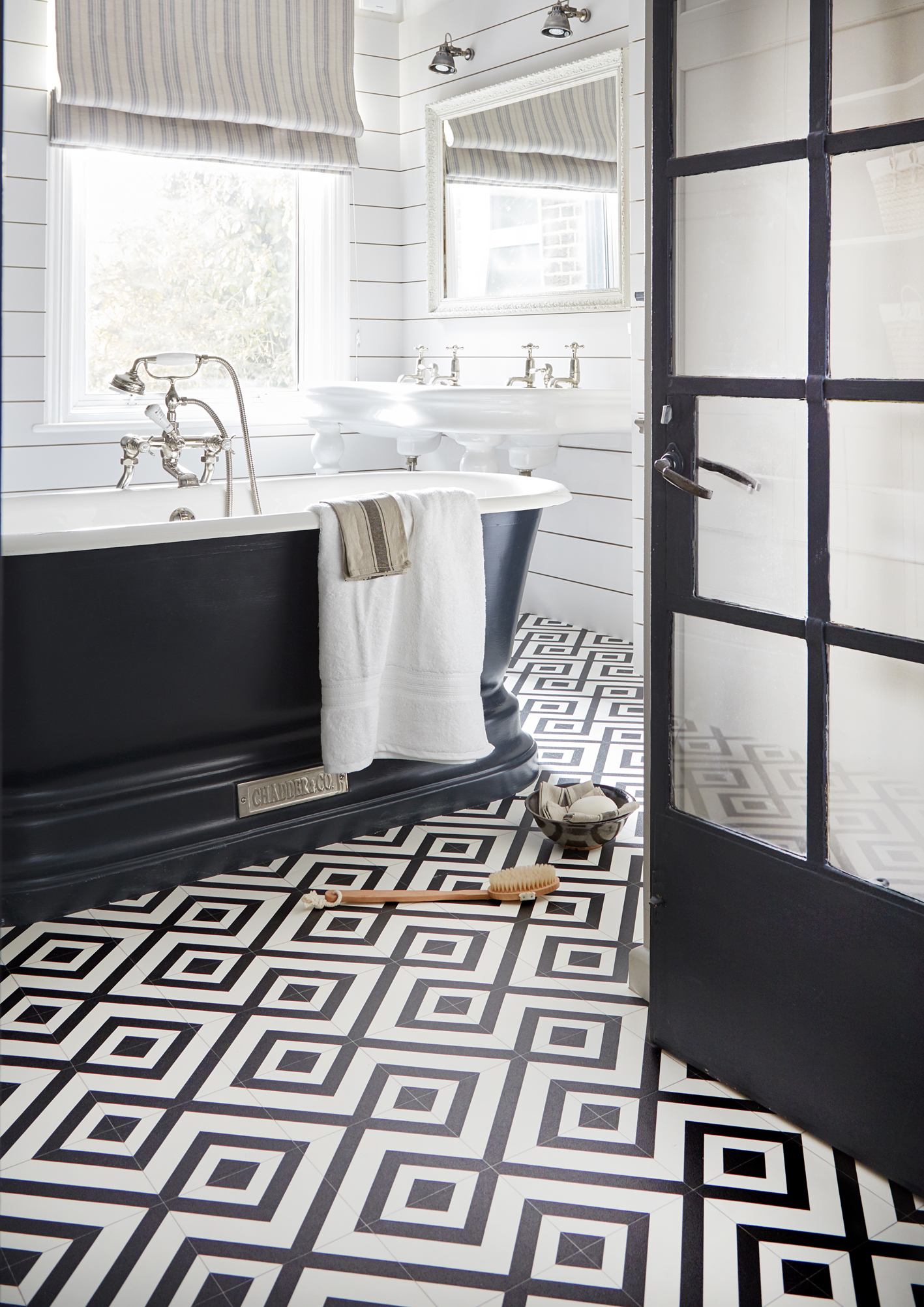
This eyecatching geometric flooring is available at Carpetright
Bathroom heating costs
A new bathroom may place more demands on your home's plumbing and heating systems. ‘Ensure that the boiler produces enough hot water for the new shower and bath,’ says Dorian Bowen, director of design consultancy Project One. ‘For an unvented system, go for a low-pressure thermostatic mixer or install a pump.’ Also, check that your water system will cope if the new bathroom is in the loft.
Heating costs
You may have to upgrade your boiler to meet your new bathroom’s needs. According to the Energy Saving Trust, a straightforward gas boiler replacement will cost around £2,300.
Underfloor heating costs
For an electric system for your new bathroom, factor in around £100 per square metre. If your bathroom is going to include a wet underfloor heating system, the costs are likely to be from £170 per square metre.
Bathroom fittings and fixtures costs
The location and size of your bathroom will affect the choices that are available, with off-the-shelf bathroom buys being much cheaper than bespoke pieces.
’With limited space, consider made-for-purpose compact fittings and made-to-measure products, such as shower enclosures, glass screens or doors,’ says David Smith. ‘Where there are height restrictions, use a bespoke glazing company. They will template the space and know how to provide easy entry to the shower, so water doesn’t splash out.’
If keeping the budget down is key, spend out on quality fittings and fixtures that will get lots of wear and tear: the taps, in particular, the toilet, the sink and the bath.
You can save money by shopping online or waiting for the sales. Claw back more of that spend by swapping real stone tiles for cheaper lookalike porcelain, for example.
With that in mind, if you really want to clamp down on costs, remember that it can be hard to tell the difference between natural materials like stone and wood, and their imitation counterparts. So opting for porcelain or ceramic tiles that look like stone, marble or wood will offer you the same aesthetic as the real thing but massively cut the cost of a new bathroom.
Bathroom suite and installation cost
The specification of the suite or individual pieces will have a big influence on your final costs, whereas plumbing costs will be much the same whether you choose a less expensive bath, basin and WC or designer fittings. However, if you are refitting an existing bathroom, remember that your final costs will also be influenced by the layout.
‘Installation prices will vary depending on whether you are simply replacing items – such as removing an old sink and bath and installing a new one in the same place – or redesigning the bathroom,’ says David Smith.
For a bathroom with WC, basin and bath, costs range from around £4,000 to around £10,500, depending on where you source the pieces. For a shower room with WC, basin and shower cubicle, budget from around £4,500 to around £11,000, depending on where you shop, from DIY stores to high-end showrooms.
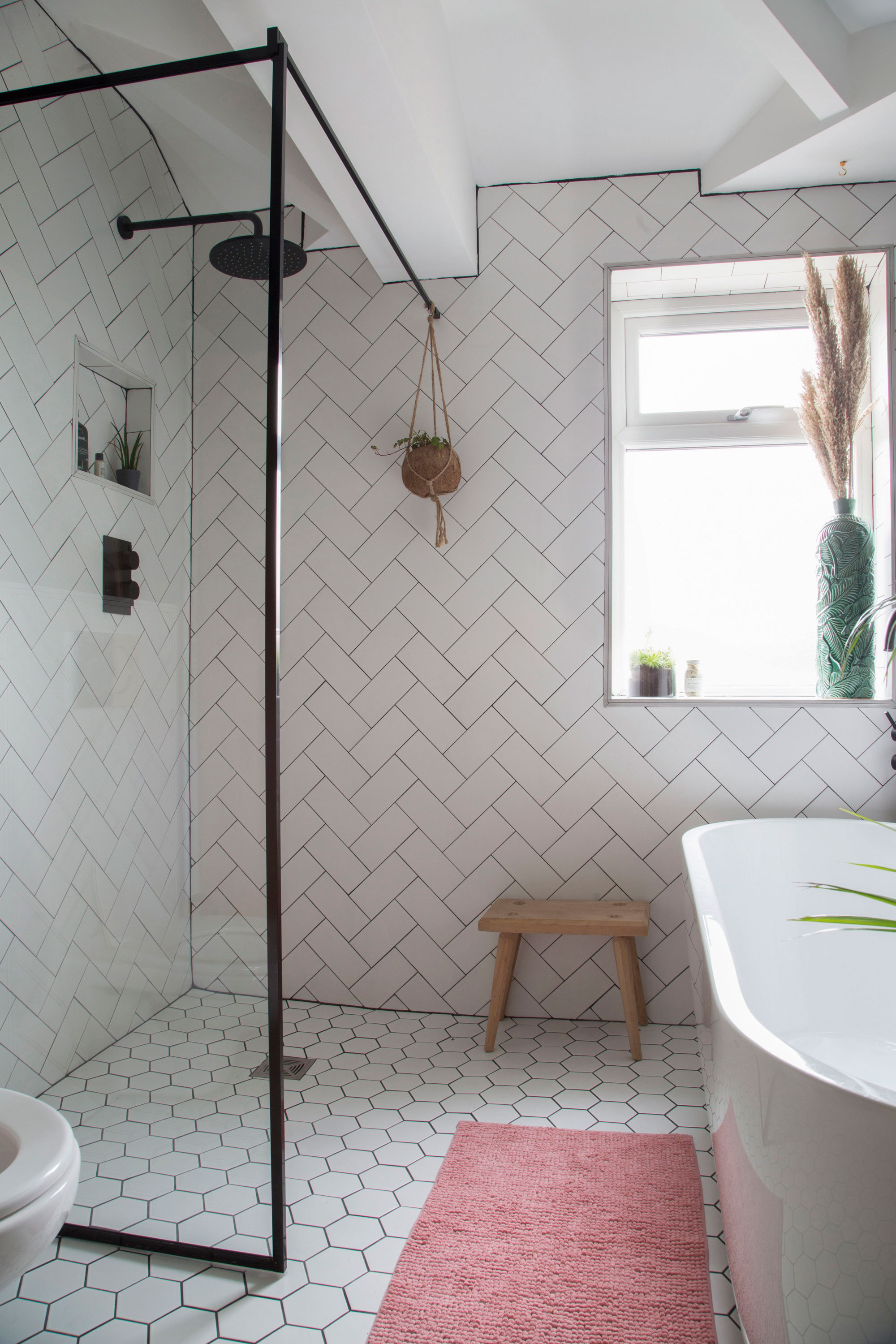
This beautiful bathroom painted with Sanderson paints features wood panelling and a classic roll top bath
Bathroom decorating costs
Once the sanitaryware is fitted, you'll need to set aside budget to tile the walls, add bathroom flooring and decorate the walls.
If you are saving money by not tiling the full room, some of the walls will need painting, for which you will need a specialist bathroom paint that can withstand the moisture and be wiped clean. You should also use this to paint the ceiling.
If you're looking for bathroom paint ideas, take a look at our gallery for inspiration.
Finally, think about finishing touches like bathroom storage for make-up or towels. Fitted bathroom furniture is more expensive than freestanding solutions, and you can take the latter with you when you move house.
Finally, set aside a little budget to add accessories to inject personality into the scheme. Here are some ideas to help you decorate your bathroom, whatever the budget.
Decorating cost
Tiling is a huge contributor to what can go wrong in a bathroom. Factor in the correct materials over using the cheapest product. If your project is a wet room, make sure that you use the right tanking system.
You can find effect tiles that aren't the real thing but still good quality and these are also lower maintenance as they don’t need sealing to protect them from water damage.
Tiles are a great example of how you can be economical with bathroom materials by creating focal points in specific places. ‘Tile some feature areas and leave the rest painted,’ says experienced renovator Jason Orme. ‘Focus on the splash zones around the bath, shower and behind the basin to maximise impact.’
Browse our guide to how to choose ceramic and porcelain floor tiles for more advice and inspiration.
If tiling is not part of your overall project cost, allow from around £850 to tile a bathroom of medium size.
More on bathroom planning and design:
- Bathrooms on a budget – 33 chic yet cheap bathroom ideas to transform your space
- How to design a small bathroom
- 20 bathroom renovation tips

Sarah is a freelance journalist and editor writing for websites, national newspapers, and magazines. She’s spent most of her journalistic career specialising in homes – long enough to see fridges become smart, decorating fashions embrace both minimalism and maximalism, and interiors that blur the indoor/outdoor link become a must-have. She loves testing the latest home appliances, revealing the trends in furnishings and fittings for every room, and investigating the benefits, costs and practicalities of home improvement. It's no big surprise that she likes to put what she writes about into practice, and is a serial house revamper. For Realhomes.com, Sarah reviews coffee machines and vacuum cleaners, taking them through their paces at home to give us an honest, real life review and comparison of every model.